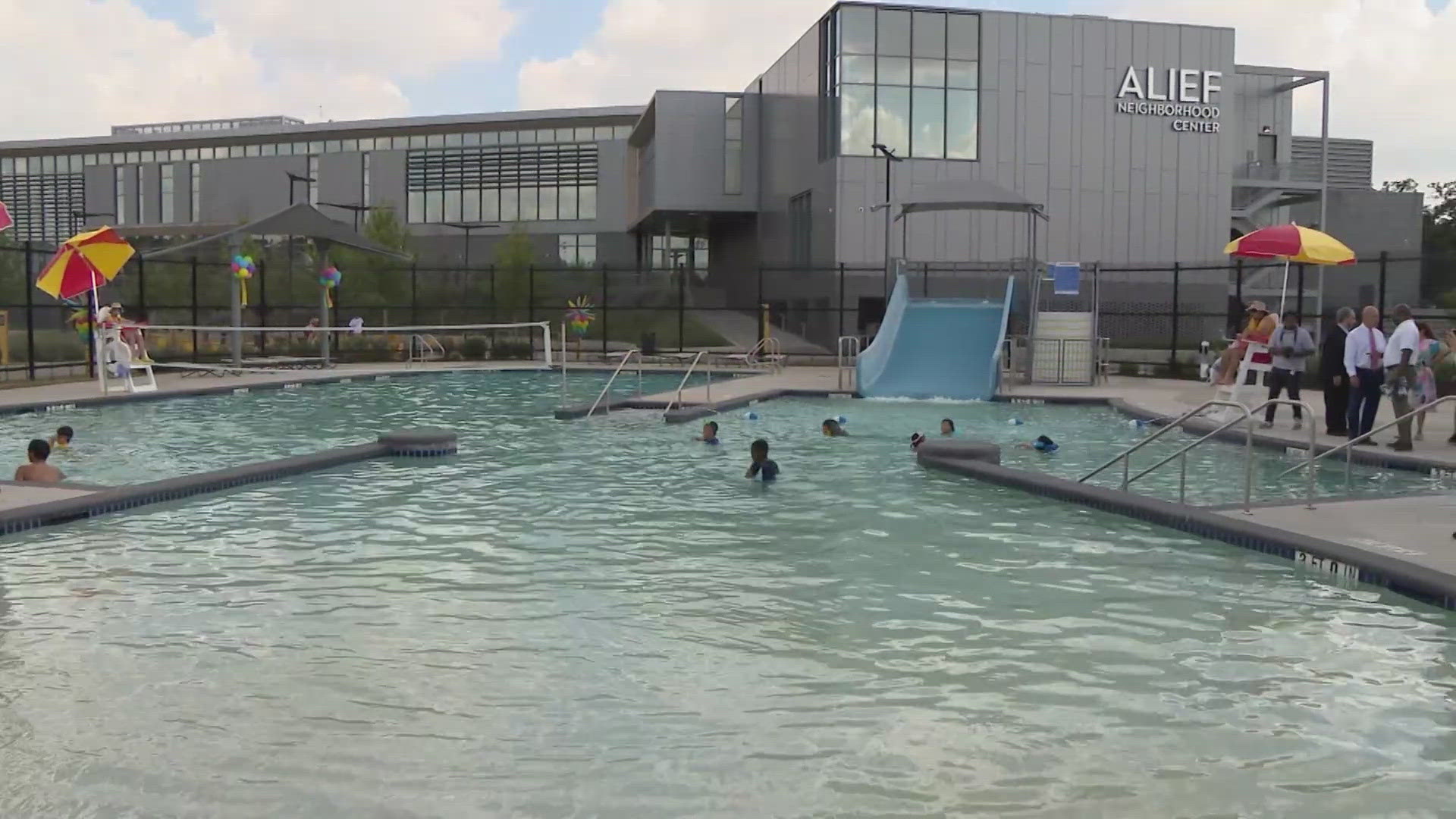HOUSTON — It's summer pool and beach season so it's a good time to remind parents to keep their kids safe around water.
Houston Fire Chief Samuel Peña shared a startling statistic Tuesday morning at a news conference on pool safety that should serve as a wake-up call. He said there've already been over 20 near drownings or drownings in Houston since May 1.
Editor's note: The video above originally aired in 2020.
In 2023, 90 children drowned in Texas, including 37 in the Greater Houston area, according to the Department of Family and Protective Services.
Pools, ponds, lakes and oceans aren't the only potentially dangerous areas for kids. Twenty-four of the drownings in Texas last year happened in a bathtub.
And don't think it couldn't happen to you. Drowning is quick and quiet and it's the leading cause of death for children ages 1 to 4, according to Peña.
"Drowning is preventable. Learning how to swim is critically important," Peña said. "Learn how to swim, teach your children how to swim, supervise your children constantly."
The City of Houston Parks and Recreation Department offers a free swimming lessons program. Click here for more information.
Home Pool Safety
We've put together a list of water safety tips from getparentingtips.com.
Backyard pools, spas, and hot tubs can be fun, but it's important to make a pool safety plan to protect your own children and guests. Keep in mind that large inflatable pools can be just as dangerous as in-ground pools. Make sure these pools are emptied after each use or they have a locked fence around them.
Every year, emergency rooms treat about 6,400 pool and spa injuries in children younger than 15 years old.
Pool Safety Tip #1: Secure the Pool Area
The first step in a pool safety plan is to think about how you'll keep children and pets from gaining access to the pool. Children often die in backyard pools when they slip through exterior doors, even pet doors, while parents are asleep or distracted. Protective fencing, gates, and doors provide the first line of defense against drownings.
- Hot tubs, spas, and pools should always be behind a fence that is at least 4 feet high.
- The fence should have a self-closing, self-latching gate that opens outward. The latches should be out of reach of children.
- Keep back doors and pet doors locked to prevent children from accessing the pool or hot tub.
- If possible, install doorknob safety covers and/or locks or bolt latches higher up on exterior doors where children cannot unlock them.
- A pool alarm can detect waves on the pool surface to let you know if a child or pet has fallen in.
- Add a lock to a gate leading to your backyard for extra precaution.
- These tips apply even if you don't have children of your own. Olympic skier Bode Miller and his wife Morgan's 19-month-old daughter drowned in 2018 when she slipped through the back door of a friend's house they were visiting. “A child under 30 pounds can drown in 30 seconds,” Morgan Beck Miller told TODAY. “And I just keep counting to 30 in my head. That was all I needed.”


Always supervise
- A responsible adult should always supervise children in and around water. Keep new swimmers and non-swimmers within arm’s reach.
- You can also designate a “water watcher” whose job is to maintain constant watch over kids at the pool during pool parties.
- Make sure the adult knows CPR and has a phone to call 911.
- Adults should leave their devices inside so they're not distracted.
- Have flotation devices available to use in a rescue.
- Share rules with anyone who may watch your child.
- Teach water survival skills: The CDC says swim lessons can reduce the risk of drowning by up to 88 percent. The earlier your child learns to swim, the better.
Along with swim lessons, your child should know how to:
- Return to the surface if they fall in over their head
- Float or tread water
- Turn in a circle in the water and look for an exit
- Swim 25 yards (75 feet)
- Get out of the pool without using the ladder
Other outdoor water safety tips
- Never leave children alone in or around water (pools, kiddie pools, lakes, creeks, buckets, beaches, ponds or drainage ditches).
- Floaties can give small children a false sense of security. They don’t realize it’s the floaties that are keeping them above water. Don’t take them off while you’re near water.
- Find out if your child's friends or neighbors have pools at their homes.
- Do not allow children to swim in any water after heavy rains or flooding.
- When the pool is in use, completely remove pool covers and cleaning machines.
Indoor safety tips
Drowning dangers aren't just limited to recreational swimming areas like pools, lakes, and rivers. Drowning can happen in less than 2 inches of water, and when babies drown, it most commonly happens in bathtubs, buckets and even toilets.
- Never leave small children alone near any container of water, including tubs, buckets, coolers, toilets or aquariums.
- Keep bathroom doors closed and secure toilet lids with locks.
- Never leave young children alone in or around the bath.
- Get what you need before filling the tub. If you need to leave the room, take the child with you.
- Make sure children can't leave the house to get to pools or hot tubs.
Source: Helpandhope.org

